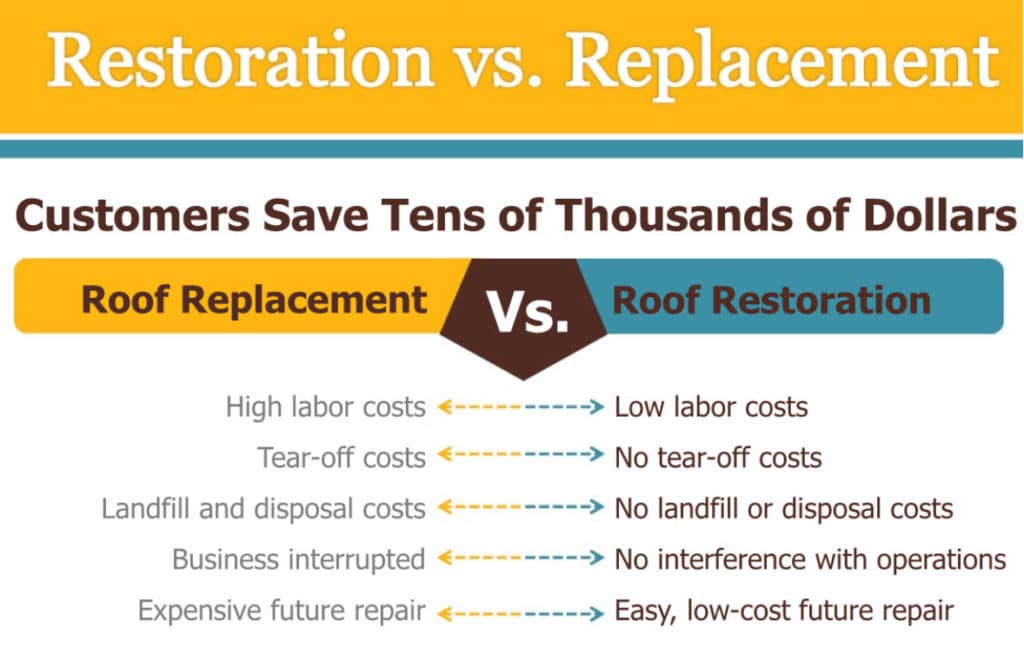Roof Replacement San Antonio: Top 5 Expert Tips for 2024
Why Roof Replacement is Important in San Antonio
Roof replacement San Antonio is crucial for maintaining the structural integrity of your home. Over time, roofs wear out, and a typical roof will last about 20 years. In San Antonio, the weather can be harsh, with scorching summers and surprise hailstorms adding stress to your roof. Addressing roof issues early can prevent significant damage down the line.
Key Points to Know:
- Typical Roof Lifespan: 20 years
- San Antonio Weather: Hot summers, sudden hailstorms
- Importance: Protects structural integrity and family safety
My name is Preston Williams, and I am the owner and co-founder of ARP Roofing. With years of experience in roof replacement San Antonio, I aim to provide affordable, reliable, and professional roofing solutions.
Factors Affecting Roof Replacement Costs
When planning a roof replacement in San Antonio, several factors can affect the overall cost. Understanding these can help you budget and make informed decisions.
Roof Size
The size of your roof is one of the most significant cost factors. Larger roofs require more materials and labor, which increases the total cost. For instance, a 2,000-square-foot home will cost more to reroof than a 1,500-square-foot home.
Key Point: The larger the roof, the higher the cost.
Roofing Materials
The choice of roofing materials can dramatically affect the price. Common options include asphalt shingles, metal, clay tiles, and slate tiles. Each material has its pros and cons, and the prices vary widely. For example:
- Asphalt Shingles: About $6,500 for a 2,000-square-foot home
- Clay Tiles: Around $36,000 for the same size
- Metal Roofing: Approximately $24,500
Tip: Consider budget-friendly options like asphalt shingles or metal roofing if cost is a concern.
Installation Costs
Installation costs can vary based on the complexity of the roof. Roofs with multiple angles, dormers, or skylights may require more time and specialized skills, which can increase labor costs.
Example: A simple, flat roof will cost less to install than a complex, multi-level roof.
Contractor Fees
Contractor fees are another essential factor. It’s crucial to choose a reputable contractor with experience in roof replacement San Antonio. While it’s tempting to go with the lowest bid, quality matters. Poor workmanship can lead to costly repairs down the line.
Pro Tip: Get multiple quotes and consider the contractor’s reputation, experience, and the quality of materials used.
Labor Costs
Labor costs in San Antonio typically range from $37 to $55 per hour. This can add up quickly, especially for larger or more complex projects. Ensure you understand the labor costs involved before starting your project.
Fact: On average, labor alone can be a significant portion of the roofing project cost.
Additional Costs
Don’t forget to factor in additional costs like permits, removal of the old roof, and disposal fees. These can add several hundred dollars to the total cost.
Example: Junk removal costs around $225 on average.
Understanding these factors can help you budget effectively for your roof replacement in San Antonio. Next, we’ll discuss the different types of roofing materials available and their benefits.
Types of Roofing Materials
When it comes to roof replacement in San Antonio, choosing the right material is crucial. Here are the most common options:
Asphalt Shingles
Asphalt shingles are the most popular roofing material in North America. They are affordable and easy to install. These shingles come in a variety of colors and styles, making them a versatile choice for any home.
- Lifespan: 15-30 years
- Cost: Approximately $6,500 for a 2,000-square-foot home
- Pros: Budget-friendly, easy to find, wide range of options
- Cons: Shorter lifespan compared to other materials
Metal Roofs
Metal roofs are gaining popularity due to their durability and energy efficiency. They reflect heat, which can help lower cooling costs during San Antonio’s hot summers.
- Lifespan: 40-70 years
- Cost: Around $24,500 for a 2,000-square-foot home
- Pros: Long-lasting, fire-resistant, energy-efficient
- Cons: Higher upfront cost, requires specialized installation
Tile Roofs
For a touch of old-world charm, tile roofs are an excellent choice. They are made from clay or concrete and can last for several decades.
- Lifespan: Up to 70 years or more
- Cost: Clay tiles cost about $36,000, while concrete tiles are around $17,000 for a 2,000-square-foot home
- Pros: Exceptional heat resistance, long-lasting, aesthetically pleasing
- Cons: Heavy, may require additional structural support, expensive
Concrete Tiles
Concrete tiles offer many of the same benefits as clay tiles but at a lower cost. They are durable and can mimic the appearance of more expensive materials.
- Lifespan: Similar to clay tiles, up to 70 years
- Cost: Approximately $17,000 for a 2,000-square-foot home
- Pros: Durable, cost-effective, versatile in design
- Cons: Heavy, may need extra support
Energy-Efficient Options
Energy-efficient roofing options are designed to reduce energy consumption and lower utility bills. These can include cool roofs, which reflect more sunlight and absorb less heat.
- Pros: Lower energy bills, environmentally friendly, may qualify for tax credits
- Cons: Higher initial cost, limited color and style options
Choosing the right material for your roof replacement in San Antonio depends on various factors, including budget, aesthetic preferences, and specific needs related to the local climate.
Next, we’ll walk you through the roof replacement process, from initial inspection to final cleanup.
Roof Replacement Process
Initial Inspection
The roof replacement journey begins with a comprehensive inspection. This step is crucial for identifying existing issues and planning the project. A professional roofer will examine your roof for signs of damage such as missing shingles, leaks, and structural weaknesses. This inspection helps in understanding the scope of work required.
Damage Assessment
After the initial inspection, the roofer will provide a detailed damage assessment. This report outlines the extent of the damage and recommends whether a full replacement or partial repair is needed. It’s essential to have a clear picture of the roof’s condition to avoid unexpected costs later on.
Material Selection
Next, you’ll choose the roofing materials. Options include asphalt shingles, metal roofs, tile roofs, and energy-efficient alternatives. The choice depends on your budget, aesthetic preferences, and the specific needs of your home in San Antonio’s climate. Your roofer can guide you in selecting materials that offer durability and energy efficiency.
Installation Steps
Once the materials are selected, the installation process begins. Here’s a simplified breakdown:
- Preparation: The area around your home is prepared to protect landscaping and property.
- Old Roof Removal: The existing roofing materials are removed, and the roof deck is inspected for damage.
- Repairs: Any necessary repairs to the roof deck are made, such as replacing damaged plywood.
- Underlayment Installation: A protective underlayment is installed to provide an additional layer of protection against moisture.
- Roofing Material Installation: The new roofing materials are installed, starting from the bottom edge and working upwards.
- Flashing and Ventilation: Flashing is installed around chimneys, vents, and other areas to prevent leaks. Proper ventilation is also ensured to maintain roof health.
- Final Inspection: The roofer conducts a final inspection to ensure everything is installed correctly and meets quality standards.
Cleanup
The last step is the cleanup process. Replacing a roof generates a lot of debris. Professional roofers will ensure that all waste materials are removed from your property. They will also check for any stray nails or sharp objects to leave your yard safe and clean.
Understanding each step of the roof replacement process can help you prepare for the project and set realistic expectations. Next, we’ll discuss the benefits of a roof replacement and how it can improve your home’s value and efficiency.
Benefits of Roof Replacement
Replacing your roof is more than just a necessary maintenance task—it’s an investment in your home’s future. Let’s explore the key benefits of roof replacement.
Home Value
A new roof can significantly boost your home’s value. When potential buyers see a recently replaced roof, they’re more likely to feel confident about the property’s condition. According to research, a new roof can increase your home’s resale value by up to 70% of the replacement cost. This makes it one of the best home improvement projects for return on investment.
Curb Appeal
First impressions matter. A new roof can dramatically improve your home’s curb appeal. Whether you choose modern asphalt shingles, neat metal roofing, or classic tiles, a new roof can make your home look fresh and well-maintained. This is especially important if you’re planning to sell your house soon.
Energy Efficiency
Replacing an old roof with energy-efficient materials can lower your utility bills. For instance, the Under 1 Roof Program in San Antonio offers grants for energy-efficient white shingle roofs and solar underlayment. These materials can reflect more sunlight and reduce the amount of heat entering your home, making it easier to keep your house cool during Texas’ hot summers.
Family Protection
A sturdy roof is essential for protecting your family and belongings. Old or damaged roofs can lead to leaks, mold, and structural issues. By replacing your roof, you ensure that your home remains a safe and healthy environment. Plus, new roofing materials are often more resistant to extreme weather conditions, such as hail and strong winds, which are common in San Antonio.
Long-Term Savings
While the initial cost of a roof replacement can be high, the long-term savings are substantial. A new roof reduces the need for frequent repairs and maintenance. Additionally, many insurance companies offer lower premiums for homes with new roofs or roofs made of weatherproof materials. Over time, these savings can offset the initial investment.
In summary, a roof replacement offers numerous benefits, from enhancing your home’s value and appearance to improving energy efficiency and safety. Next, we’ll discuss what to expect when replacing your roof in San Antonio, including how the local climate can affect your roofing needs.
Roof Replacement San Antonio: What to Expect
Replacing a roof in San Antonio comes with unique challenges and considerations. The local climate, common roofing issues, and specific types of damage all play a role in the process. Here’s what you need to know.
Local Climate Impact
San Antonio’s climate is characterized by hot summers, mild winters, and occasional severe weather. These conditions can significantly impact your roof’s lifespan and the timing of replacements.
Hot Summers: The intense Texas heat can cause roofing materials to expand and contract, leading to cracks and other damage. Asphalt shingles, for example, can become brittle and lose their protective granules faster.
Mild Winters: While winters are generally mild, the occasional cold snap can still affect roofing materials. Metal roofs, which are popular for their durability, can contract in cold weather, potentially causing seams to open.
Severe Weather: San Antonio is no stranger to severe weather, including hailstorms and high winds. These events can cause immediate and significant damage to your roof.
Common Roofing Issues
When considering a roof replacement in San Antonio, it’s essential to be aware of common roofing issues that homeowners face:
- Leaks: Often caused by poor installation or aging materials, leaks can lead to water damage inside your home.
- Ventilation Problems: Poor ventilation can cause condensation buildup, leading to mold and rot.
- Pest Damage: Termites and other pests can create structural damage, making your roof less stable.
Hail Damage
Hailstorms are a frequent occurrence in San Antonio. Hail can dent metal roofs, crack tiles, and strip asphalt shingles of their protective granules. If your roof has suffered hail damage, it’s crucial to get a professional inspection to determine the extent of the damage and whether a repair or full replacement is necessary.
Sun Exposure
Constant exposure to the sun can degrade roofing materials over time. UV rays can cause shingles to fade, become brittle, and lose their effectiveness. Metal roofs can also suffer from thermal expansion and contraction, leading to potential issues with fasteners and seams.
Wind Damage
High winds can lift shingles, break tiles, and even cause debris to impact your roof. Wind damage is often more severe on the edges of the roof where the wind can catch and lift materials. Regular inspections can help catch wind damage early before it leads to more significant issues.
In summary, while San Antonio’s climate presents several challenges for roofing, understanding these factors can help you make informed decisions about your roof replacement. Up next, we’ll answer some frequently asked questions about roof replacement in San Antonio.
Frequently Asked Questions about Roof Replacement in San Antonio
How much does it cost to replace a roof in San Antonio?
The cost to replace a roof in San Antonio generally ranges from $3.75 per square foot. However, this figure can vary based on several factors.
Factors Influencing Cost:
- Roof Size: Larger roofs require more materials and labor, increasing the overall cost.
- Material Selection: Asphalt shingles are more affordable, while metal or tile roofs are pricier due to their durability and complexity.
- Roof Complexity: Roofs with multiple angles or intricate designs can cost more due to the additional work involved.
- Permits and Inspections: Securing necessary permits and completing mandatory inspections can add to the cost.
How long does a roof last in San Antonio?
The lifespan of a roof in San Antonio depends on the type of material used and how well it is maintained.
Material Lifespan:
- Asphalt Shingles: Typically last between 15 to 30 years.
- Metal Roofs: Can last 50 years or more.
- Clay Tile Roofs: Have a life expectancy of 40 to 50 years.
Maintenance Tips:
- Regular Inspections: Conduct annual or semi-annual inspections to catch issues early.
- Clean Gutters: Ensure gutters are clean to prevent water buildup.
- Repair Damage Promptly: Fix any missing or damaged shingles immediately to avoid further damage.
When is it better to replace a roof than repair it?
Deciding between repairing or replacing your roof involves considering several key factors.
Age: If your roof is more than 20 years old, replacement is usually more cost-effective. Older roofs are more likely to have underlying issues that repairs can’t fix long-term.
Damage Extent: Major damage like holes or significant weathering often warrants a replacement. Multiple layers of shingles can also accelerate aging and trap moisture, making replacement a better option.
Cost Comparison: Repairs might seem cheaper upfront but can add up over time. New roofs offer better insulation and energy efficiency, potentially lowering your heating and cooling bills.
By understanding these aspects, you can make a more informed decision about whether to repair or replace your roof.
Conclusion
At ARP Roofing & Remodeling, we prioritize customer satisfaction above all else. Our mission is to provide you with a seamless and stress-free roof replacement experience. From the initial consultation to the final inspection, we ensure that every step of the process is handled with the utmost professionalism and care.
Licensed Experts
Our team consists of licensed and insured roofing experts who bring years of experience to every project. We are manufacturer-certified with top brands like Atlas and GAF, ensuring that we use only the best materials available. This means your new roof will not only look great but also stand the test of time.
Flexible Payment Options
We understand that roof replacement can be a significant investment. That’s why we offer flexible payment options to suit your budget. Whether you’re dipping into emergency savings, considering a personal loan, or leveraging home equity, we can guide you through the best financing options available. We also offer in-house financing to make the process even smoother.
Insurance Claim Assistance
Dealing with insurance claims can be daunting, especially after storm damage. Our team is here to make this process as straightforward as possible. We will help you communicate with your insurance company, explain the claims process, and ensure that you get the coverage you deserve. Once your claim is approved, we can start the project quickly, often within one to two weeks.
Customer Satisfaction Guaranteed
We take pride in our work and are committed to exceeding your expectations. Our transparent pricing ensures there are no surprise bills, and our workmanship guarantees mean you can rest easy knowing your roof is built to last. With ARP Roofing & Remodeling, you can trust that your home is in good hands.
Ready to start your roof replacement in San Antonio? Contact us today for a free consultation and let our experts guide you through the process.
Your new roof is just a click away!




